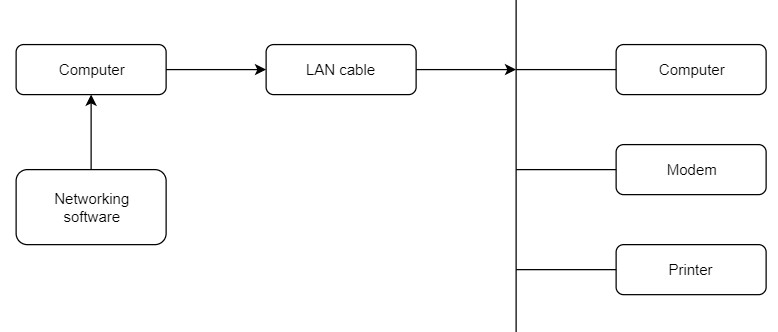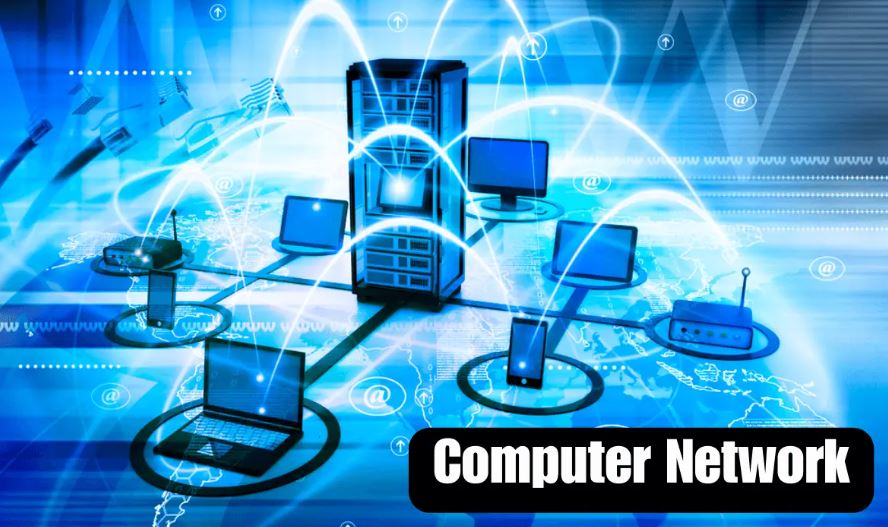Part 1
Computer Networking
Networking, at its core, is building relationships. It’s about connecting with others who share your interests or profession. Traditionally, this involved attending conferences or industry events, striking up conversations, and exchanging business cards.
The word ‘network’ means, “two computers are connected using a transmission media and uses the linkage for sharing resources (e.g.: printer, hard disk, etc.), transfer data & messages”.

In today’s digital age, networking has transformed. Online platforms like LinkedIn allow you to connect with professionals worldwide. Virtual events and webinars offer opportunities to learn and connect with others in your field.
But networking isn’t just about collecting contacts. It’s about fostering genuine connections. Be interested in others, ask thoughtful questions, and offer help when you can. Share your knowledge and expertise. By building strong relationships, you open yourself up to new opportunities, like potential job leads, collaborations, or simply valuable insights from others in your field.
Advantages of a network
- Resource Sharing – In networking, you just buy devices for all computers in the same network, not one device for one computer, i.e., Low cost is used for the devices. e.g., Printers, modems etc.
- High Reliability – All the files could be replicated on two or more machines if one goes down during transferring the data, other can be used.
- Communication Media – Using the media, two or more devices can be interconnected to share resources and exchange information at a high speed.
- High Speed – The information can be synchronized among different computers at a high speed. When one worker makes a change to an on-line document, the others can see the change immediately.
Affecting factors to networking
There are two main factors you should think about before doing networking:
- For the hardware – you should consider:
- The suitable speed for the system
- Cost
- Convenience during network processing
- Repairing
- Safety
- For the software – you should consider:
- Cost
- Ease of use / support
- Stability, speed, update
- Application needed to run on the network
Classification of network
Local area network (LAN)
LANs are the network usually confined to a geographic area, such as a single building or a college campus. LANs can be small, linking few computers. The development of standard networking protocols and media has resulted in worldwide proliferation of LANs throughout business and educational organizations.
Campus area network (CAN)
As the name suggests, a Campus Area Network or CAN is a network spread over a limited geographical area such as a university. You can setup CAN in a number of ways. One inexpensive way is to use a plain vanilla telephone. Cable as the communication medium, and a device that can interface various patches of LAN s across the campus. One such device is the LAN extender. Each LAN extender box comes with two RJ45 Ethernet cables, an RJ11 telephone cable, a power adapter and a surge protector box.
Metropolitan area network (MAN)
Metropolitan Area Network (MAN) are networks that connect LANs together within the city. The main criterion for the MAN is that the connection between LAN is through a local exchange carrier (the local phone company). The protocols that are used for MANs are quite different from those used for LAN (except for ATM, which can be used for both under certain conditions).

Wide area network (WAN)
Wide Area Network (WAN) connects LAN Together between cities. A WAN is a data communication network that covers a relatively broad geographic area and that often uses transmission facilities provided by common carriers, such as telephone companies. WAN technologies generally functions at the lower three layers of the OSI reference model: the physical layer, the data link layer, and the network layer.
Types of network topologies
Logical topology
A logical topology is a networking concept that defines the architecture of a network’s communication mechanism for all nodes. The logical topology of a network can be dynamically maintained and reconfigured using network equipment such as routers and switches. Logical topologies differ from physical topologies, which refer to the physical interconnections of all network devices. The logical topology specifies how data should be transferred. In contrast, physical topology consists of the layout of cables, network devices, and wiring. For example, two most commonly used logical topologies are bus topology and ring topology.
Physical topology
The interconnected structure of a local area network is referred to as its physical topology (LAN). The physical topology is defined by the method used to connect the physical devices on the network with cables, as well as the type of cabling used. This is in contrast to logical topology, which describes the performance of a network’s media signals and how it exchanges device data. When we map our physical network topology, we concentrate on the physical devices and the cables that connect them. A physical network topology will include icons for elements such as workstations, servers, routers, and switches, with lines representing cable connections between these elements.
Resources:
https://ncert.nic.in/textbook/pdf/lecs110.pdf
https://www.techtarget.com/searchnetworking/definition/network-topology
